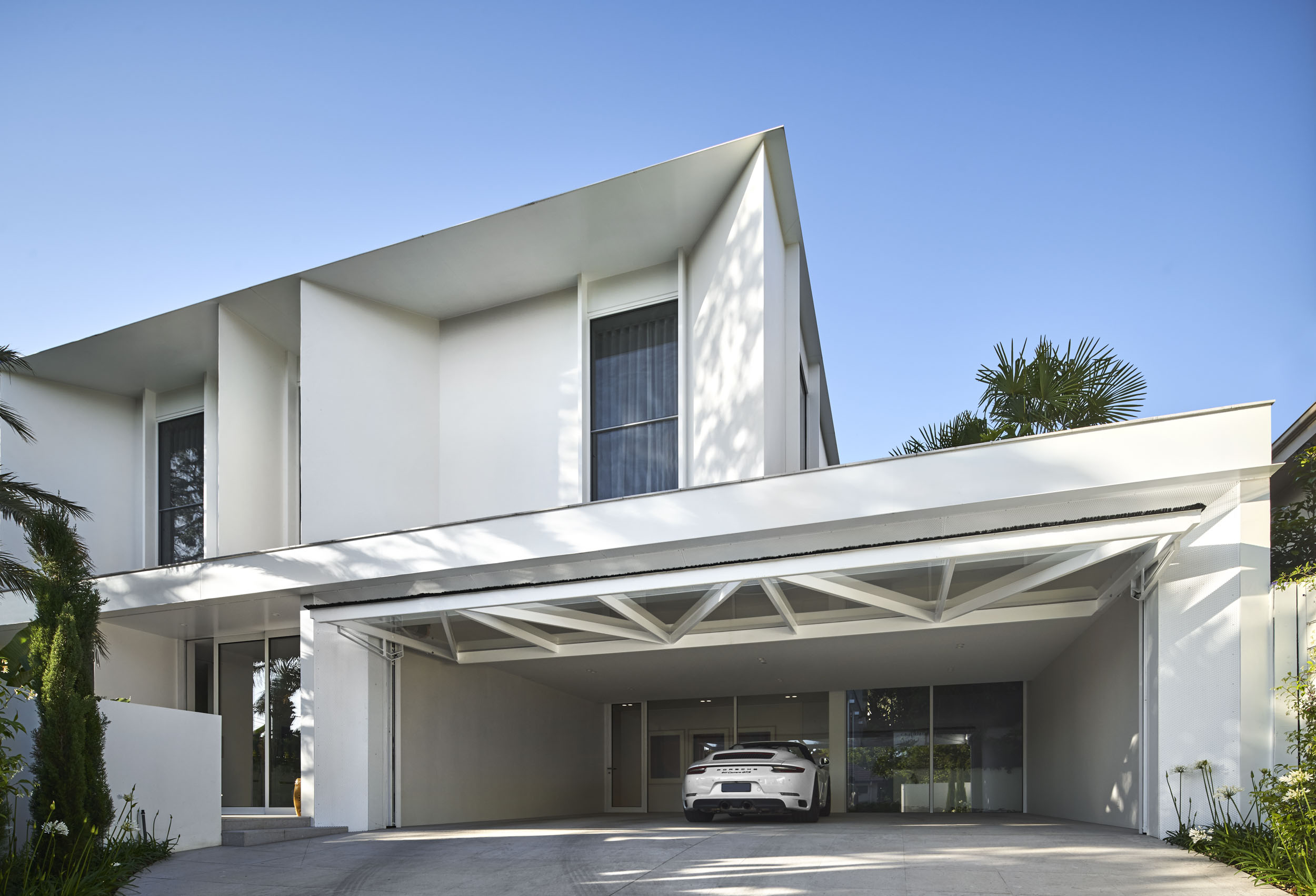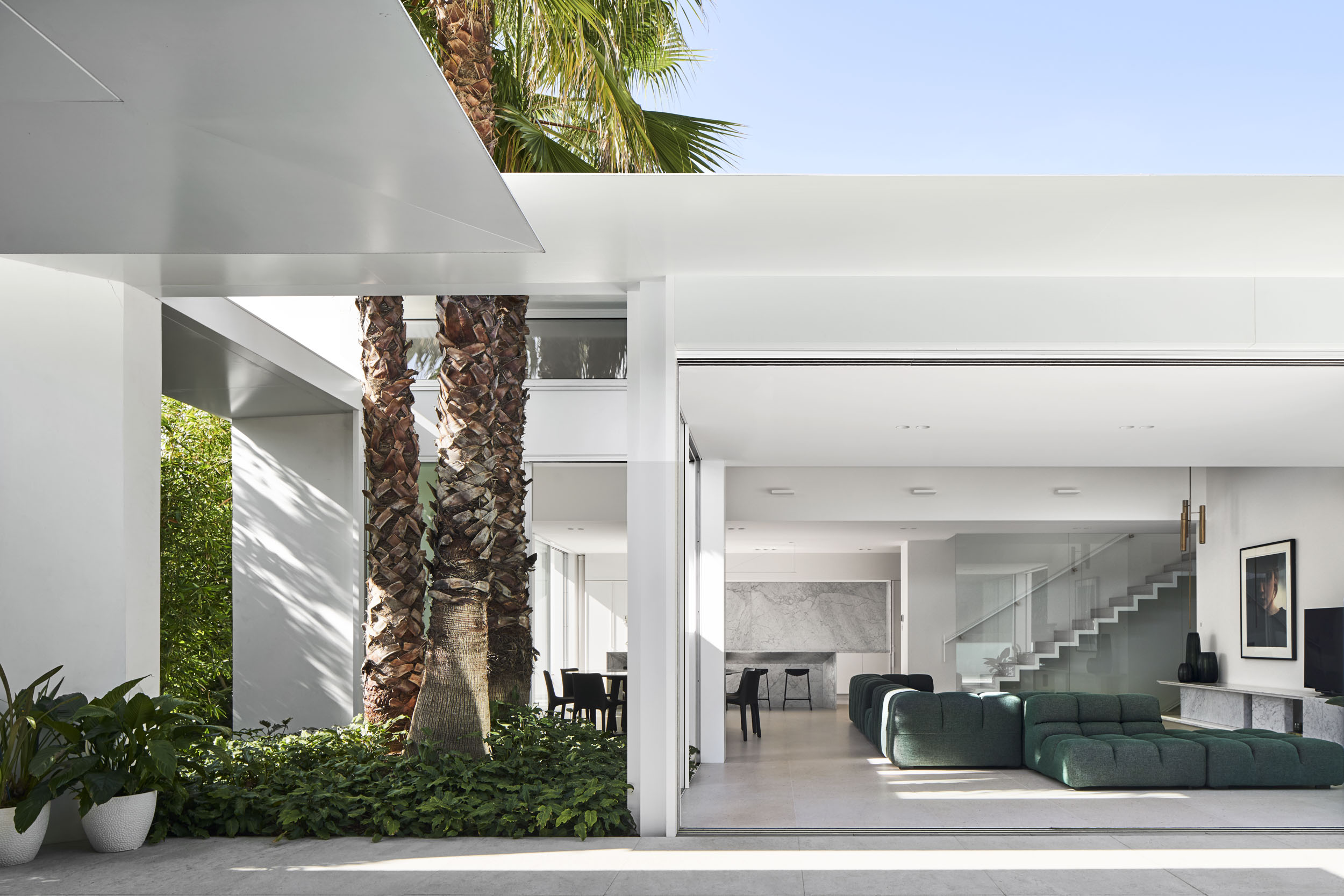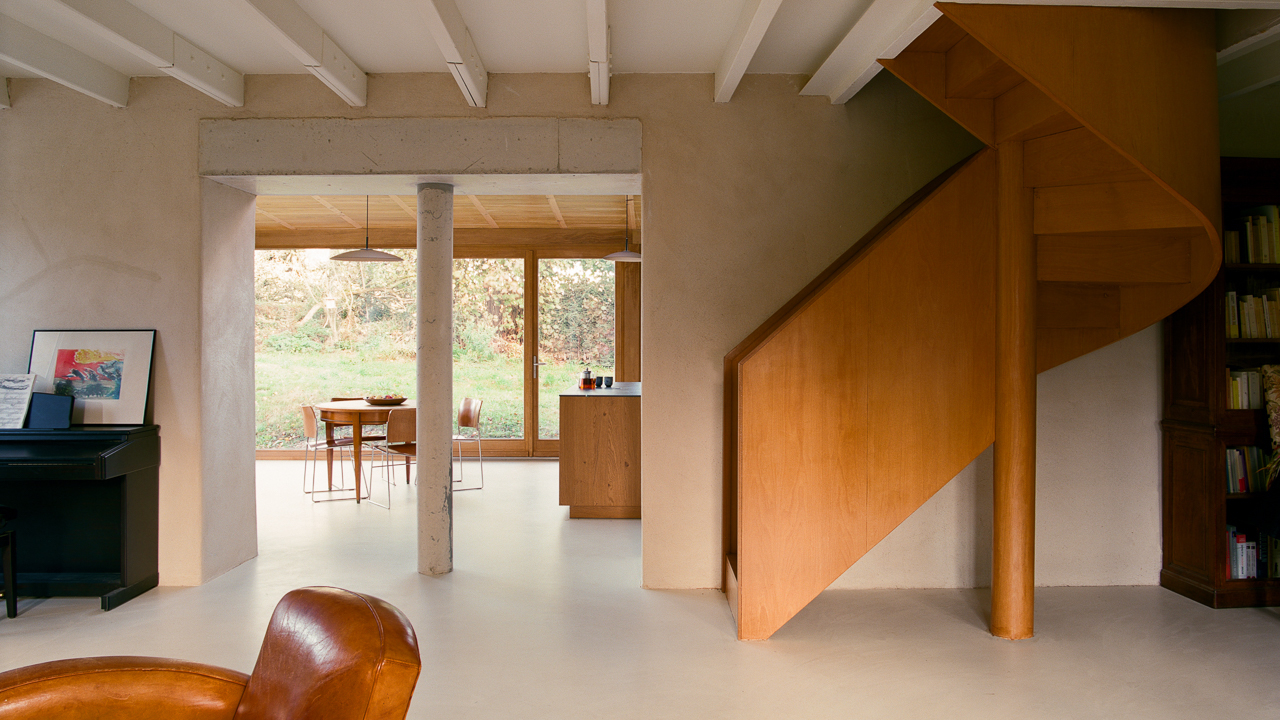Decorative old and minimalist new meet at Wyoming House by Inarc
A sharp, white house near the banks of Melbourne's Yarra River blends majestic old decor and minimalist new elements in a design by architecture studio Inarc
Peter Clarke - Photography

Refinement is the order of the day in this elegantly reappointed 1870s Victorian house, thanks to a comprehensive overhaul and restoration by the Melbourne studio Inarc. Set in Studley Park, a long-established suburb near to the city’s twisting Yarra River, the house sits amongst what were once market gardens and small farms established to feed the city in its early years. Many of the large houses and plots that made up this streetscape were subsequently subdivided, demolished and redeveloped, but this particular house, Wyoming, clung on to its corner site, withstanding any radical change.
The owners have spent 13 years here and knew the site and their requirement inside out. Their brief to Inarc was to extend the house, expand the interior spaces and restore and retain the elements of the house, inside and out, that reference the long history of the area. Change has already brought eclecticism, and the Studley Park of the 21st century is a melange of original Victorian houses and modern structures in every shape and style.

The key components of the surviving house were the principle function rooms, with high ceilings, meticulous panelling and cornice details, and elaborate decorations. The substantial new addition replaces an earlier garage block and includes a utility area, self-contained apartment and space for three cars on the lower ground floor, above which sits an impressive master suite and kitchen and dining room.
The original structure, to the west of the site, is restored and transformed into an open plan area with three sitting rooms and a grand dining room, making the most of the tall windows and beautiful detailing. The entrance, marked by a new pavilion, creates a formal route from the main street. Planting includes Canary Island date palms, a particular favourite in the Victorian era, alongside other tropical favourites.
Old and new are united by a glazed link, with the three-storey new structure making the most of the site’s slope. Two further bedrooms are located on the top floor of the new addition, set back to create a stepped façade. White walls with blade-like angled steel details give the addition a striking contemporary look, with the steel carried through into the original structure in the form of a slender verandah on the north façade, shading the junction between house and garden. The interiors are minimalist, with luxurious materials like marble used in the kitchen, stone floors throughout and meticulous detailing like the bespoke steel handrails. These make a stark contrast with the exquisitely restored mouldings, creating a space that tells its story of evolution over time.














INFORMATION
Receive our daily digest of inspiration, escapism and design stories from around the world direct to your inbox.
Jonathan Bell has written for Wallpaper* magazine since 1999, covering everything from architecture and transport design to books, tech and graphic design. He is now the magazine’s Transport and Technology Editor. Jonathan has written and edited 15 books, including Concept Car Design, 21st Century House, and The New Modern House. He is also the host of Wallpaper’s first podcast.
-
 The Bombardier Global 8000 flies faster and higher to make the most of your time in the air
The Bombardier Global 8000 flies faster and higher to make the most of your time in the airA wellness machine with wings: Bombardier’s new Global 8000 isn’t quite a spa in the sky, but the Canadian manufacturer reckons its flagship business jet will give your health a boost
-
 A former fisherman’s cottage in Brittany is transformed by a new timber extension
A former fisherman’s cottage in Brittany is transformed by a new timber extensionParis-based architects A-platz have woven new elements into the stone fabric of this traditional Breton cottage
-
 New York's members-only boom shows no sign of stopping – and it's about to get even more niche
New York's members-only boom shows no sign of stopping – and it's about to get even more nicheFrom bathing clubs to listening bars, gatekeeping is back in a big way. Here's what's driving the wave of exclusivity
-
 The Architecture Edit: Wallpaper’s houses of the month
The Architecture Edit: Wallpaper’s houses of the monthFrom wineries-turned-music studios to fire-resistant holiday homes, these are the properties that have most impressed the Wallpaper* editors this month
-
 An Australian holiday home is designed as a bushfire-proof sanctuary
An Australian holiday home is designed as a bushfire-proof sanctuary‘Amongst the Eucalypts’ by Jason Gibney Design Workshop (JGDW) rethinks life – and architecture – in fire-prone landscapes, creating a minimalist holiday home that’s meant to last
-
 Neometro is the Australian developer creating homes its founders ‘would be happy living in’
Neometro is the Australian developer creating homes its founders ‘would be happy living in’The company has spent 40 years challenging industry norms, building design-focused apartment buildings and townhouses; a new book shares its stories and lessons learned
-
 The Melbourne studio rewilding cities through digital-driven landscape design
The Melbourne studio rewilding cities through digital-driven landscape design‘There's a lack of control that we welcome as designers,’ say Melbourne-based landscape architects Emergent Studios
-
 A Republic Tower apartment refresh breathes new life to a Melbourne classic
A Republic Tower apartment refresh breathes new life to a Melbourne classicLocal studio Multiplicity's refresh signals a new turn for an iconic Melbourne landmark
-
 A Japanese maple adds quaint charm to a crisp, white house in Sydney
A Japanese maple adds quaint charm to a crisp, white house in SydneyBellevue Hill, a white house by Mathieson Architects, is a calm retreat layered with minimalism and sophistication
-
 A redesigned warehouse complex taps into nostalgia in Queensland
A redesigned warehouse complex taps into nostalgia in QueenslandA warehouse in Queensland has been transformed from neglected industrial sheds to a vibrant community hub by architect Jared Webb, drawing on the typology's nostalgic feel
-
 Australian bathhouse ‘About Time’ bridges softness and brutalism
Australian bathhouse ‘About Time’ bridges softness and brutalism‘About Time’, an Australian bathhouse designed by Goss Studio, balances brutalist architecture and the softness of natural patina in a Japanese-inspired wellness hub